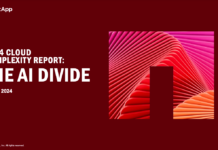We are not playing around with our large language models (LLMs) anymore. LLMs like ChatGPT and Bard have transitioned from novelty to necessity in the business world. Enterprise expenditure on generative AI solutions is projected to reach US$151.1 billion in 2027 with a CAGR of 86.1% from 2023-2027, indicating a burgeoning interest in AI applications.
The initial spike in popularity for LLMs has also matured into a strategic enterprise focus to integrate AI more deeply into business operations. For instance, McKinsey’s annual survey on the state of AI found that one-third of businesses are using generative AI regularly in at least one business function, while 25% of enterprises using AI say generative AI is already on their boards’ agendas.
This notable shift towards increased technology usage in enterprises is set to enhance overall performance. It also marks 2024 as a pivotal year for LLM adoption, as the trajectory for generative AI solutions is taking a more strategic and targeted approach. This evolution represents a new era, in which AI transitions from an experimental tool to a fundamental element of business strategy and operations.
LLM applications: 2023 vs 2024
In 2023, even when a few employees at companies were testing out ChatGPT and other LLMs, it was mainly for drafting an email or replying to a message. The gutsier individuals may have used it for proposals and other long-form documents, but for the most part, these LLM-generated products were for internal use only. Given the possibility of factual inaccuracies and other such hallucinations, it was not wise to deploy LLMs for external, public-facing content.
Now, however, with a year of experimenting and refining, LLM developers are ready to launch — or in some cases, have already launched — business versions of their products that cater to businesses. Two areas of application that we will see great upgrades in quality and thus adoption are customer service and content creation. This is what we can look forward to this year.
Why 2024?
Two key factors have converged to make 2024 the year for LLM applications’ mass adoption: technological advancements and market sentiments. Since ChatGPT’s launch in November of 2022, LLMs have evolved from text completion and analysis models to powerful chatbots with the ability to execute code, use tools, access external knowledge, and search the web. In other words, in less than 12 months, the technology community at large has revolutionised a tool that was already revolutionary.
Yet, these technological advancements would have no market value if executives did not buy into them — and that was what 2023 was all about. There is no doubt now that most CEOs are on board with implementing AI solutions into business operations, as they have made it clear that investing in AI is a “top priority.” As more vertical-specific LLMs become available, it will only make it easier for companies to adopt and deploy these generative AI solutions.
This year will also see LLM developers address a key area of concern: data security. By providing corporations with a solution where their data remains theirs and within their systems, technology developers can provide the market with a safer, more powerful version of their existing solutions that will make them more attractive to risk-averse CEOs.
Last year also saw governments and other watchdog organisations struggle with regulating AI. In December of 2023, the European Union came to an agreement on its AI Act, a landmark set of rules that regulate and limit the use of AI. Once enacted, this act (and the many more that will surely follow) will influence how tech companies approach their AI solutions. Simply put, these acts will set the ground rules for what is allowed and what is banned.
With more power, more buy-in, and more clarity, LLM applications are poised to reach mass adoption among the biggest corporations around the world.
Customer service, content creation, and LLMs
Imagine if ChatGPT were the customer service chatbot on a website. Visitors typically would not be able to distinguish between a real person and the bot. The integration of these LLM chatbots into customer service presents a cost-saving opportunity for businesses to always be available to their customers. In fact, as consumers demand more from businesses and their experiences with businesses, these LLM chatbots could be the answer to provide more personalised interactions and yield better customer satisfaction.
One of the advantages of using LLMs for content creation is speed. If you don’t like what it comes up with, rephrase your prompt and in less than a minute, you get a new result. This is especially useful in marketing and advertising where multivariate testing and iterating are key. Whether it is for an ad slogan, an informational blog post, or even a short story, LLMs can use the vast data they were trained on to generate new ideas and text.
Beyond speed, what has gotten businesses to buy into the use of these LLMs for content creation is the variety of content — in form, style, and tone. Initially, there was concern that outputs from ChatGPT might all sound the same. However, prompt engineering has proven otherwise.
With slight changes in phrasing a prompt, ChatGPT and similar solutions can generate varied content on the same topic. More importantly, users can instruct the LLM content creator to adopt a certain style or tone of writing. Iteration becomes critical here, as users refine inputs to train the model to reflect their unique voice. The ultimate goal is for the LLM to produce high-quality content that resonates with the company’s voice in the shortest time possible.
How LLMs will redefine the future of businesses
As 2024 unfolds, the transformation of LLMs from experimental tools to essential business assets becomes increasingly clear. These models, now significantly advanced in technological capabilities, are crucial in areas like customer service and content creation, where they offer unparalleled efficiency and customisation. This year is not just about technological advancements but also about integrating these tools into the core of business operations, aligning with evolving regulatory landscapes and executive strategies.
The widespread adoption of LLMs is a testament to their potential to revolutionise how businesses operate, communicate, and innovate. As we witness this shift, it’s evident that LLMs are not just part of the business future; they are actively shaping it, offering new avenues for growth and efficiency in an increasingly digital world.
















